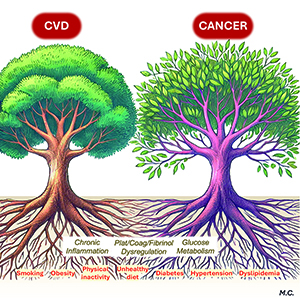Antithrombotic therapy in idiopathic infertility

Submitted: 6 March 2024
Accepted: 24 July 2024
Published: 3 October 2024
Accepted: 24 July 2024
Abstract Views: 1849
PDF: 414
Publisher's note
All claims expressed in this article are solely those of the authors and do not necessarily represent those of their affiliated organizations, or those of the publisher, the editors and the reviewers. Any product that may be evaluated in this article or claim that may be made by its manufacturer is not guaranteed or endorsed by the publisher.
All claims expressed in this article are solely those of the authors and do not necessarily represent those of their affiliated organizations, or those of the publisher, the editors and the reviewers. Any product that may be evaluated in this article or claim that may be made by its manufacturer is not guaranteed or endorsed by the publisher.
Most read articles by the same author(s)
- Silvia Cardi, Filippo Catalani, Luca Valerio, Stefano Barco, From rare to aware: confronting Lemierre syndrome , Bleeding, Thrombosis and Vascular Biology: Vol. 3 No. 3 (2024)
Similar Articles
- Massimo Franchini, Polycythemia vera and management of the thrombotic risk: an update , Bleeding, Thrombosis and Vascular Biology: Vol. 2 No. 4 (2023)
- Rita Carlotta Santoro, Roberto Minici, Marzia Leotta, Mariapia Falbo, Lucia Concetta Elia, Francesca Leo, Antonella Ierardi, Alessandra Strangio, Simona Prejanò, Vaccine-induced immune thrombotic thrombocytopenia following AstraZeneca (ChAdOx1 nCoV-19) vaccine: report of two cases , Bleeding, Thrombosis and Vascular Biology: Vol. 1 No. 2 (2022)
- Ilaria Canobbio, Silvia Stella Barbieri, Are platelets more than a model of brain neurons? , Bleeding, Thrombosis and Vascular Biology: Vol. 1 No. 1 (2022)
- Daniela Poli, Emilia Antonucci, Gualtiero Palareti, Roberto Facchinetti, Pietro Falco, Giuseppina Serricchio, Teresa Lerede, Lucilla Masciocco, Paolo Gresele, Sophie Testa, Major bleedings in mechanical prosthetic heart valves patients on Vitamin K antagonist treatment. Data from the PLECTRUM Study , Bleeding, Thrombosis and Vascular Biology: Vol. 1 No. 2 (2022)
- Marcello Baroni, Paolo Ferraresi, Nicole Ziliotto, Daria Bortolotti, Pierfilippo Acciarri, Nicola Martinelli, Giovanna Marchetti, Matteo Coen, Francesco Bernardi, Protein S on the surface of plasma lipoproteins: a potential mechanism for protein S delivery to the atherosclerotic plaques? , Bleeding, Thrombosis and Vascular Biology: Vol. 1 No. 3 (2022)
- Boris Shenkman, Ivan Budnik, Yulia Einav, Interaction between adenosine diphosphate receptors and protein-kinase C isoforms in platelet adhesion under flow condition , Bleeding, Thrombosis and Vascular Biology: Vol. 2 No. 1 (2023)
- Luca Barcella, Chiara Ambaglio, Paolo Gritti, Francesca Schieppati, Varusca Brusegan, Eleonora Sanga, Marina Marchetti, Luca Lorini, Anna Falanga, Long-term persistence of high anti-PF4 antibodies titer in a challenging case of AZD1222 vaccine-induced thrombotic thrombocytopenia , Bleeding, Thrombosis and Vascular Biology: Vol. 2 No. 2 (2023)
- Francesca Santilli, Paola Simeone, Rossella Liani, Inflammation, platelets and diabetes , Bleeding, Thrombosis and Vascular Biology: Vol. 2 No. 2 (2023)
- Mattia Galli, C. Michael Gibson, Dominick J. Angiolillo, Factor XI inhibitors in adjunct to antiplatelet therapy: the ultimate dual-pathway inhibition? , Bleeding, Thrombosis and Vascular Biology: Vol. 2 No. 3 (2023)
- Anne Eichmann, The Lefoulon Delalande Foundation honors the lymphatic vascular system , Bleeding, Thrombosis and Vascular Biology: Vol. 2 No. 4 (2023)
You may also start an advanced similarity search for this article.

 https://doi.org/10.4081/btvb.2024.126
https://doi.org/10.4081/btvb.2024.126










